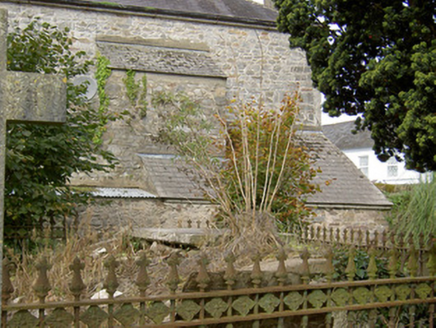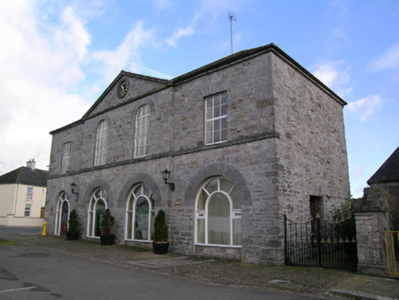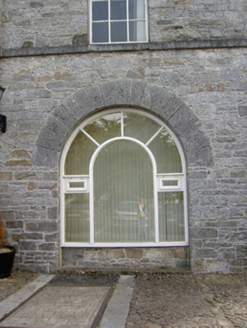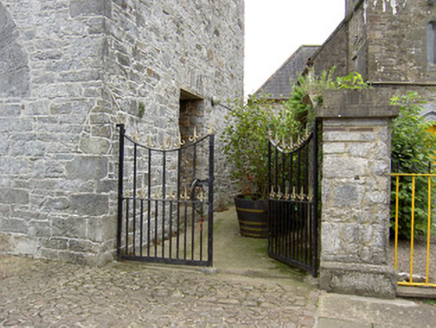Survey Data
Reg No
20813015
Rating
Regional
Categories of Special Interest
Architectural, Historical, Social
Original Use
Market house
In Use As
Surgery/clinic
Date
1785 - 1795
Coordinates
183315, 102651
Date Recorded
26/09/2006
Date Updated
--/--/--
Description
Detached four-bay two-storey former market house, built c. 1790, with pedimented breakfront and having arcaded ground floor to front elevation, and single-bay two-storey lean-to return and further two-bay single-storey lean-to to rear. Now in use as clinic. Hipped artificial slate roof with recent rooflight, and rendered and cut limestone chimneystacks. Carved limestone pediment to breakfront, and cut limestone eaves course. Rubble limestone walls, having sill course to first floor of front elevation, and having metal clock face to pediment. Round arches to arcade, with dressed limestone voussoirs and recent timber windows replacing original open arcade. Round arch windows to breakfront and square-headed windows to end bays, all with dressed limestone voussoirs and replacement timber windows. Recent square-headed window opening to north gable. Square-headed door opening to south gable with timber lintel, roughly dressed limestone voussoirs and replacement timber door. Rubble boundary wall to rear with square-headed opening having timber battened door. Entrance to south with rubble limestone square-profile pier having carved limestone plinth, rendered cap and cast-iron double-leaf gate. Graveyard of adjacent Church of Ireland to rear of building.
Appraisal
This former market house is on a site that was donated by Earl Mountcashel in 1787, who also contributed to the building costs. It serves a reminder of Kilworth's history as a market town on the road from Dublin to Cork. Its arcaded design is characteristic of buildings of this type and the central breakfront, pediment and the hipped roof add to the imposing form of the structure, which is prominently sited on the main square of the town. The limestone construction also contributes to the striking appearance and there is evidence of fine stone crafting in the voussoirs and surrounds to the openings, the pediment and sill course.







